Patients today have high expectations. They want easy appointment scheduling, short wait times, and a seamless overall experience. It’s crucial to understand that even a slight unpleasant experience can cause them to seek care elsewhere.
Now the question arises: How can healthcare professionals ensure they live up to these expectations and provide the greatest experience possible?
Well, instead of speculating, why not ask your patients? They are the ones experiencing the service and are best to uncover what you lack.
And how do you ask the patients?
Patient satisfaction survey questions can be the ideal tool to help you find your areas of improvement.
But first, let’s understand what a patient satisfaction survey is and why you need one.
What is a patient satisfaction survey?
A patient satisfaction survey is a method/tool used to understand patient’s satisfaction levels and experience for the services provided. It typically involves a series of questions designed to gather feedback on various aspects such as; the quality of care, communication with healthcare providers, wait-time, facility cleanliness, and overall satisfaction.
The feedback collected helps healthcare organizations identify areas for improvement and implement changes to ensure patient-centered care.
Why do you need a patient satisfaction survey?
A patient satisfaction survey is essential for several reasons:
1. Collecting feedback for improvement
Patient satisfaction surveys allow patients to express their experiences and concerns. Organizations can address shortcomings and deliver better healthcare services by understanding patient perspectives.
2. Providing patient-centered care
Patient satisfaction surveys enable healthcare providers to adopt a patient-centered approach. By gathering patient feedback, you can better understand patient needs. This information will help tailor services to meet those needs and expectations and provide a more personalized healthcare experience.
3. Measuring team performance
Patient satisfaction surveys help you evaluate the performance of your healthcare organization. It provides data on how smooth the service delivery and interaction with the staff was. This information helps in measuring team productivity and efficiency.
4. Encouraging transparency
Patient satisfaction surveys encourage transparency in healthcare. It ensures that you listen to patients’ concerns and are committed to providing the best patient experience.
5. Improving patient retention and loyalty
Patient satisfaction surveys can also tell how likely patients are to recommend your services to others. This information indicates that patients who are satisfied with the service will recommend others and stay loyal to you. It helps build long-lasting relationships with patients and improve patient retention.
Before we move to survey questions, we first need to understand the metrics one needs to measure from a patient satisfaction survey. These metrics will help you draft the right questions.
Metrics to monitor patient satisfaction
Here are the metrics to measure using a patient satisfaction survey:
Overall satisfaction score
This metric provides an overall assessment of patient satisfaction based on their experience with the healthcare provider or facility.
Likelihood to recommend
Often measured using the Net Promoter Score (NPS), this metric assesses the likelihood of patients recommending the healthcare provider or facility to others.
Communication effectiveness
This metric evaluates how effectively patients can communicate with healthcare providers:
For this metric, you can include questions like:
– Did you receive all the appointment details well in advance?
– Did the provider explain all the information clearly?
– Were your questions appropriately addressed?
Wait times
Wait time at the hospital or clinics directly affects patient satisfaction. Measuring this metric helps understand the situation better and find the bottlenecks to address. You may include questions about the time spent in the waiting room, waiting for test results, or waiting for appointments.
Staff courtesy and respect
This metric measures the level of courtesy and respect shown by healthcare staff towards patients.
Facility cleanliness and comfort
Evaluating the cleanliness and comfort of the healthcare facility is also a metric. It includes aspects such as the cleanliness of waiting areas, restrooms, and patient rooms, as well as the comfort of seating, bedding, and other amenities.
Care coordination and information sharing
This metric assesses how well healthcare providers coordinate care and share information with patients. You can include questions on whether patients received clear instructions for follow-up care, were they informed about medication changes, or were they involved in decision-making regarding their treatment.
Accessibility and convenience
This metric measures patient satisfaction with the accessibility and convenience of healthcare services. You can include questions about the appointment scheduling process, ease of getting through to the provider’s office, and availability of convenient appointment times.
Having known the metrics to be included in a patient satisfaction survey question, let’s now have a look at some of the examples for better understanding.
Patient satisfaction survey questions
You need to ask the right questions to effectively track your drawbacks. So here are the top patient satisfaction survey questions to include in your feedback form.
We will present the patient survey questions and explain why these examples are important.
1. How did you find the experience of booking appointments?
a) Very easy
b) Easy
c) Somewhat easy
d) Difficult
e) Somewhat difficult
f) Very difficult
Ask your patients how easy they found to book an appointment at your clinic or hospital. The easier your booking process, the higher is the patient satisfaction.
People who say they found booking difficult are best to find your drawbacks. You can include a follow-up question and ask them what they specifically didn’t like.
Tip to make booking appointments faster:
You can provide online bookings to help patients book appointments easily. Insert lead capture forms on your website and connect it with your healthcare CRM.
Place toll-free contact numbers on your website. Connect it with a call distribution mechanism in your CRM. It can redirect the call to the available agent to avoid any missed calls.
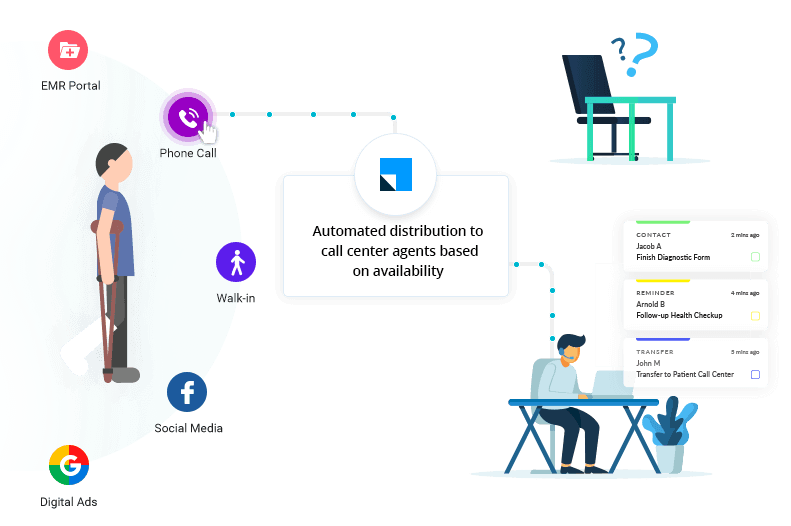
Set up automation to notify representatives and care managers about website form submission or missed calls.
2. Were our staff empathetic to your needs?
a) Vey empathetic
b) Empathetic
c) Somewhat empathetic
d) Not empathetic
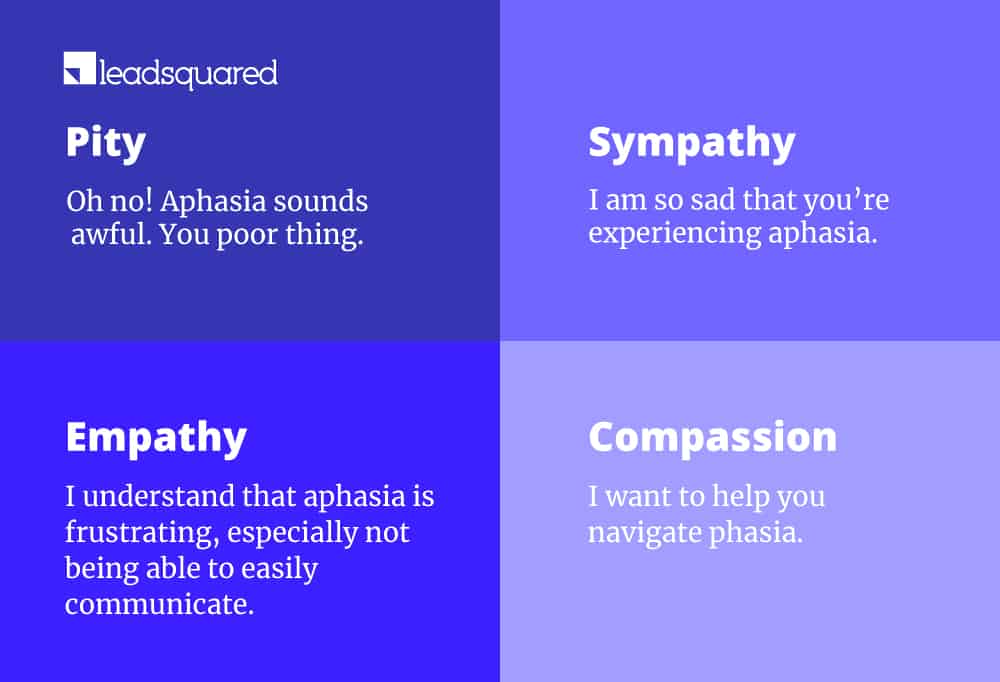
66% of patients feel providers don’t take the time to understand patient needs or explain options.
(Source: https://www.prophet.com/patientexperience/the-current-state-of-the-patient-experience.html)
This leaves patients disgruntled as they don’t receive the best care. Also, they might leave you for your competitor. So, always remember to include this question in your healthcare survey.
Tip: Train your staff to be caring and dedicated to patients.
3. How long did you have to wait until the doctor attends to you?
a) As I expected
b) Had to wait more than I expected
Cutting waiting times is one of the main goals of any healthcare organization. You want to serve patients as quickly as possible to provide satisfaction and timely care.
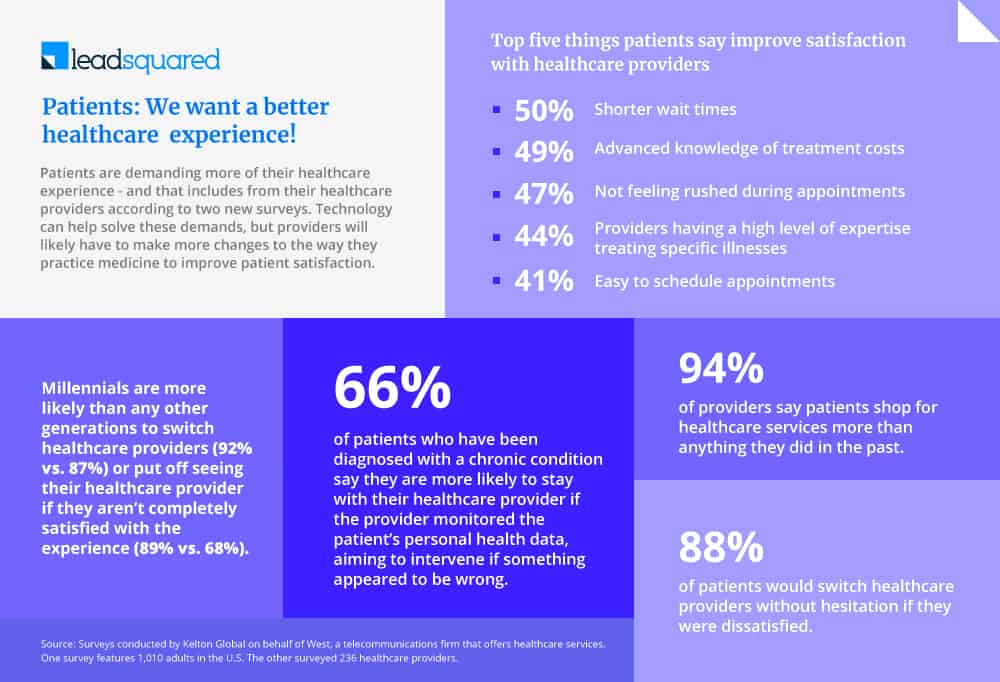
Your wait time should be on par with your industry average. Including this in your patient experience survey question will help you immensely.
Tip to reduce appointment waiting time:
Automate the healthcare process using workflow automation to reduce waiting times.
You can use HIPAA compliant appointment scheduling system to minimize no-shows and improve patient flow.
Manage recurring patients and set up timely reminders for patients to ensure availability.
4. Were you satisfied with the doctor you were allocated with?
a) Somewhat satisfied
b) Satisfied
c) Somewhat satisfied
d) Dissatisfied
e) Very dissatisfied
Healthcare organizations recommend the best doctor based on the data collected or patient requirements. However, the recommendations may not always be effective. It’s important to ask this question so that you can improve your doctor’s recommendation process.
Tip to automate and map doctor-patients:
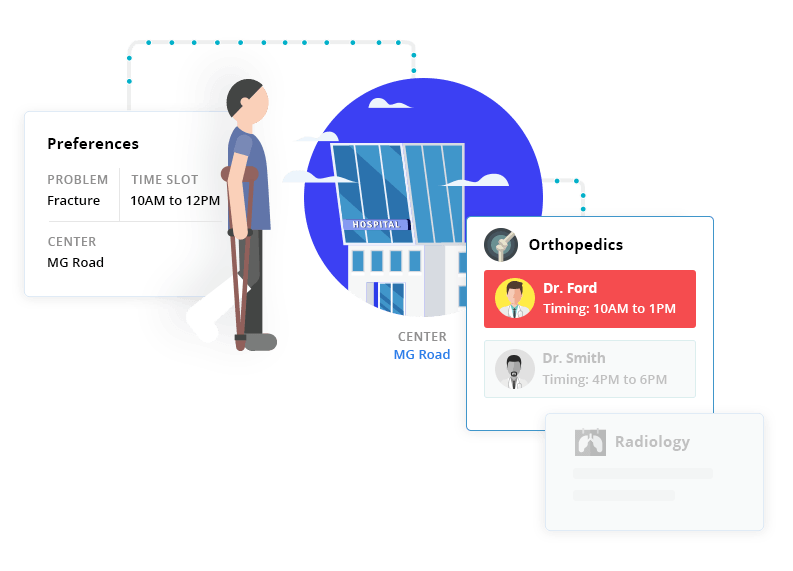
Map patients to doctors of your or their choice using distribution mechanisms in CRM. Using the patient inquiry form automate on the mapping on the basis of region, time, specialty, medical history.
5. How easy is it to navigate our facility?
a) Very easy
b) Easy
c) Somewhat easy
d) Difficult
e) Somewhat difficult
f) Very difficult
A lot of time is wasted in finding the right doctor’s room or the X-ray room in a facility. The staff is also not always around to help out. Improving facility navigability improves patient satisfaction, reduces response times, and speeds up care delivery.
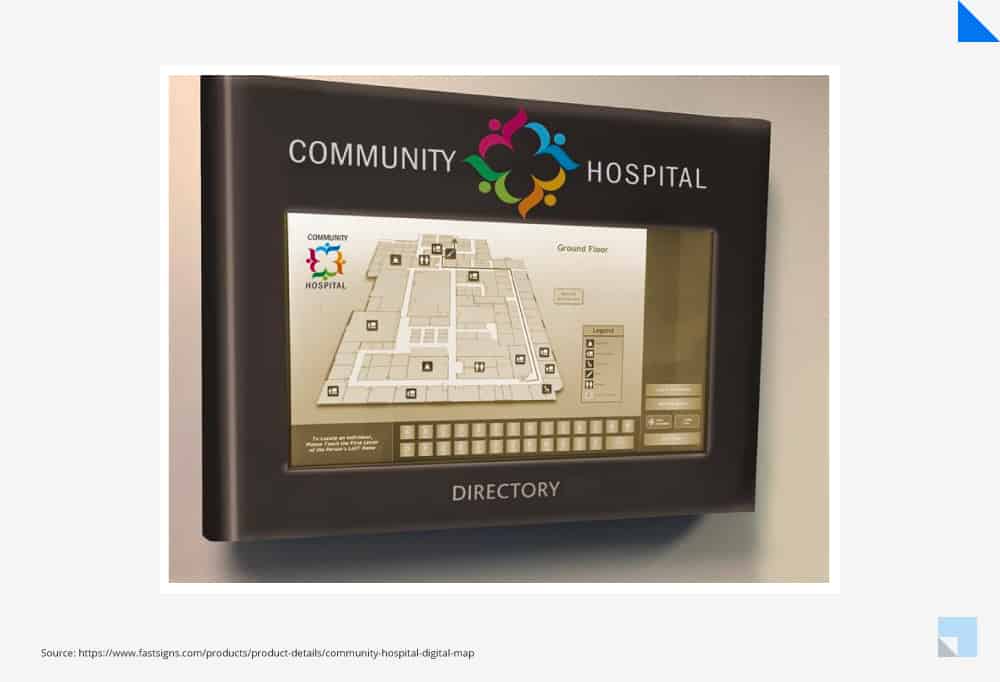
Tip: Use signs and maps to help patients find their way.
6. How happy are you with the doctor’s treatment?
a) Happy
b) Somewhat happy
c) Okay
d) Dissatisfied
Sometimes, patients are not treated well by doctors. Maybe they are too busy, or they just view patients as a business. If certain doctors are bringing a bad name to your establishment, it’s time for a change.
Tip: To overcome this challenge, ensure to onboard the right doctors. Also allocate enough time between appointments so that the doctor can spend time with patients and understand them without any hurry.
7. Were we able to answer all your questions?
a) Somewhat yes
b) Yes
c) Some questions left unanswered
d) No
It’s vital to resolve all your patient queries to provide good service. A patient will obviously not be at ease when he has questions about his health.
Tip:
Your website is the best place to answer all common questions of patients. Additionally, make sure your staff picks up the phone and replies to emails.
Use the healthcare marketing system to build landing pages, automate emails to build lasting relationships.
8. How likely are you to recommend us to your friends and family?
It’s something you need to ask all your patients. For one, it gives you an insight into the overall impression they have of your practice.
a) Very likely
b) Likely
c) Somewhat likely
d) Not very likely
e) Never
This question directly helps you discover how your patients feel. If someone is ready to recommend your business, then obviously you are doing a good job.
9. How much do you rate us? (5 being the highest rating)
This one’s a simple rating, but it tells you where you are in the customer experience journey.
a) 1
b) 2
c) 3
d) 4
e) 5
Rating is another direct way to measuring patient satisfaction. If someone gives a bad rating, you can ask them to mention what they didn’t like.
10. What are the things you feel we should improve upon?
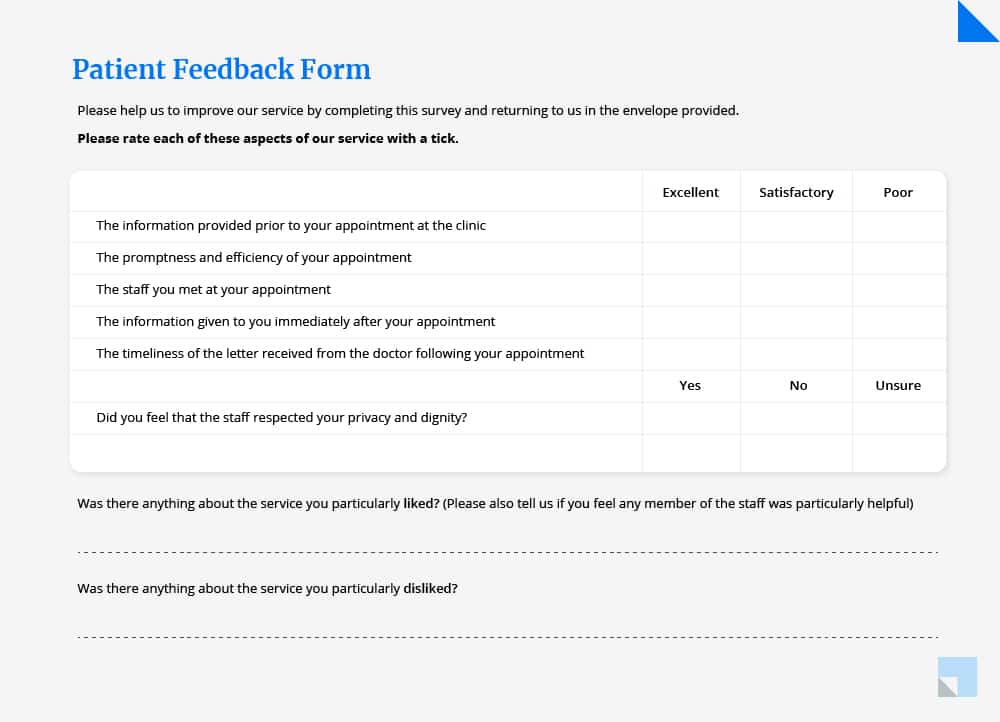
This is a perfect health care satisfaction survey question that gives you the opportunity to discover what the patients don’t like. Just provide a blank space after the question so that patients can type in their answers.
Tip: Take cues from patients and improve your shortcoming to enhance the patient experience and patient care.
ChatGPT prompt for patient satisfaction survey
AI is nearly changing everything, and it’s amazing how you can use it to improve the efficiency of your daily work. One such great example is ChatGPT.
If you want to create your own personalized patient satisfaction survey questions, you can try doing it through ChatGPT. You use it to build case specific questions like to measure satisfaction for IPD and OPD patient separately. Below are a few prompts to get you started:
Prompt 1: Write 10 patient satisfaction survey questions for outpatient feedback with 5 options to rate it on a scale of 1-5.
Prompt 2: Write 10 patient satisfaction survey questions to measure post-operative support provided by the hospital with 5 options to rate it on a scale of 1-5.
Prompt 3: Write 10 patient satisfaction survey questions for inpatient feedback with 5 options to rate it on a scale of 1-5.
Be creative and create different surveys for different departments to understand the exact problem statement and improve patient experience.
Automate Feedback Gathering with Healthcare CRM
HIPAA Compliant Healthcare CRMs like LeadSquared can automate the whole process of collecting patient feedback. You can send feedback forms and surveys via emails, text, or notifications.
The solution also helps track patient satisfaction survey questions. You can manage customer interactions and perform better healthcare marketing.
You can even automate your operations, patient management, and a plethora of tasks. Get in touch with us to know more about how LeadSquared can help your healthcare business grow.
FAQs
1. What is the patient satisfaction score?
Patient satisfaction score is the metric used to understand the satisfaction level of patients for the care provided. You can measure it using patient satisfaction surveys where patients rate their experience on a scale of 1-5.
2. Is patient satisfaction a KPI?
Yes, patient satisfaction is an important KPI for healthcare organizations. It helps you to understand if the patients are satisfied with the quality of service, interaction with the staff or with overall care provided. Patient satisfaction is a direct indicator of the growth and success of a healthcare organization.
3. How to use NPS in healthcare?
The Net Promoter Score (NPS) is a single-question metric that measures how patients feel about your healthcare organization and the services it offers. The usual question asked is: How likely are you to recommend [hospital name] to a friend, family or colleague? It also acts as an important indicator for the growth of your practice.
Also read:





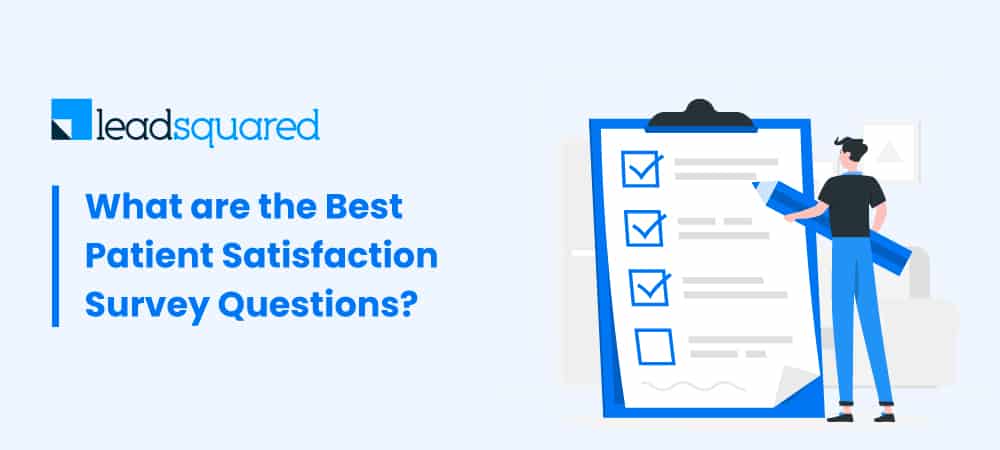



![[Webinar] Accelerate Revenue with Sales Automation 8 Accelerate Revenue with Sales Automation](https://www.leadsquared.com/wp-content/uploads/2021/11/MicrosoftTeams-image-11-80x80.png)